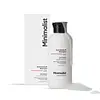What's inside
What's inside
 Key Ingredients
Key Ingredients

 Benefits
Benefits

 Concerns
Concerns

 Ingredients Side-by-side
Ingredients Side-by-side

Water
Skin ConditioningCetearyl Alcohol
EmollientBehentrimonium Chloride
PreservativeBis-Diisopropanolamino-Pg-Propyl Dimethicone/Bis-Isobutyl PEG-14 Copolymer
Polysorbate 20
EmulsifyingButyloctanol
HumectantGlycerin
HumectantCetyl Esters
EmollientCetyl Alcohol
EmollientStearamidopropyl Dimethylamine
EmulsifyingParfum
MaskingHydroxyethylcellulose
Emulsion StabilisingLactic Acid
BufferingPhenoxyethanol
PreservativeOryza Sativa Extract
AbsorbentZea Mays Starch
AbsorbentOryza Sativa Bran Oil
EmollientPolyglyceryl-4 Caprate
EmulsifyingXanthan Gum
EmulsifyingTocopherol
AntioxidantSodium Benzoate
MaskingPotassium Sorbate
PreservativeGluconolactone
Skin ConditioningCalcium Gluconate
HumectantTilia Tomentosa Bud Extract
Skin ConditioningBHT
AntioxidantDisodium EDTA
Polyquaternium-110
Water, Cetearyl Alcohol, Behentrimonium Chloride, Bis-Diisopropanolamino-Pg-Propyl Dimethicone/Bis-Isobutyl PEG-14 Copolymer, Polysorbate 20, Butyloctanol, Glycerin, Cetyl Esters, Cetyl Alcohol, Stearamidopropyl Dimethylamine, Parfum, Hydroxyethylcellulose, Lactic Acid, Phenoxyethanol, Oryza Sativa Extract, Zea Mays Starch, Oryza Sativa Bran Oil, Polyglyceryl-4 Caprate, Xanthan Gum, Tocopherol, Sodium Benzoate, Potassium Sorbate, Gluconolactone, Calcium Gluconate, Tilia Tomentosa Bud Extract, BHT, Disodium EDTA, Polyquaternium-110
Water
Skin ConditioningDisodium Laureth Sulfosuccinate
CleansingGlycerin
HumectantCocamide Mea
EmulsifyingDisodium Cocoyl Glutamate
CleansingCocamidopropyl Betaine
CleansingGlycol Stearate
EmollientSodium Lauryl Sulfoacetate
CleansingDimethiconol
EmollientSodium Lauroyl Sarcosinate
CleansingUndecylenoyl Glycine
CleansingCapryloyl Glycine
CleansingSodium Cocoyl Isethionate
CleansingPolyquaternium-7
Tocopheryl Acetate
AntioxidantSalicylic Acid
MaskingSodium Cocoate
CleansingPiroctone Olamine
PreservativeClimbazole
AntimicrobialAcrylates Copolymer
Polyquaternium-10
Carbomer
Emulsion StabilisingHydroxypropyl Methylcellulose
Emulsion StabilisingPEG-45m
HumectantPhenoxyethanol
PreservativeSodium Glutamate
MaskingSodium Hydroxide
BufferingTrisodium Ethylenediamine Disuccinate
Tea-Dodecylbenzenesulfonate
CleansingEthylhexylglycerin
Skin ConditioningWater, Disodium Laureth Sulfosuccinate, Glycerin, Cocamide Mea, Disodium Cocoyl Glutamate, Cocamidopropyl Betaine, Glycol Stearate, Sodium Lauryl Sulfoacetate, Dimethiconol, Sodium Lauroyl Sarcosinate, Undecylenoyl Glycine, Capryloyl Glycine, Sodium Cocoyl Isethionate, Polyquaternium-7, Tocopheryl Acetate, Salicylic Acid, Sodium Cocoate, Piroctone Olamine, Climbazole, Acrylates Copolymer, Polyquaternium-10, Carbomer, Hydroxypropyl Methylcellulose, PEG-45m, Phenoxyethanol, Sodium Glutamate, Sodium Hydroxide, Trisodium Ethylenediamine Disuccinate, Tea-Dodecylbenzenesulfonate, Ethylhexylglycerin
Ingredients Explained
These ingredients are found in both products.
Ingredients higher up in an ingredient list are typically present in a larger amount.
Glycerin is already naturally found in your skin. It helps moisturize and protect your skin.
A study from 2016 found glycerin to be more effective as a humectant than AHAs and hyaluronic acid.
As a humectant, it helps the skin stay hydrated by pulling moisture to your skin. The low molecular weight of glycerin allows it to pull moisture into the deeper layers of your skin.
Hydrated skin improves your skin barrier; Your skin barrier helps protect against irritants and bacteria.
Glycerin has also been found to have antimicrobial and antiviral properties. Due to these properties, glycerin is often used in wound and burn treatments.
In cosmetics, glycerin is usually derived from plants such as soybean or palm. However, it can also be sourced from animals, such as tallow or animal fat.
This ingredient is organic, colorless, odorless, and non-toxic.
Glycerin is the name for this ingredient in American English. British English uses Glycerol/Glycerine.
Learn more about GlycerinPhenoxyethanol is a preservative that has germicide, antimicrobial, and aromatic properties. Studies show that phenoxyethanol can prevent microbial growth. By itself, it has a scent that is similar to that of a rose.
It's often used in formulations along with Caprylyl Glycol to preserve the shelf life of products.
Water. It's the most common cosmetic ingredient of all. You'll usually see it at the top of ingredient lists, meaning that it makes up the largest part of the product.
So why is it so popular? Water most often acts as a solvent - this means that it helps dissolve other ingredients into the formulation.
You'll also recognize water as that liquid we all need to stay alive. If you see this, drink a glass of water. Stay hydrated!
Learn more about Water